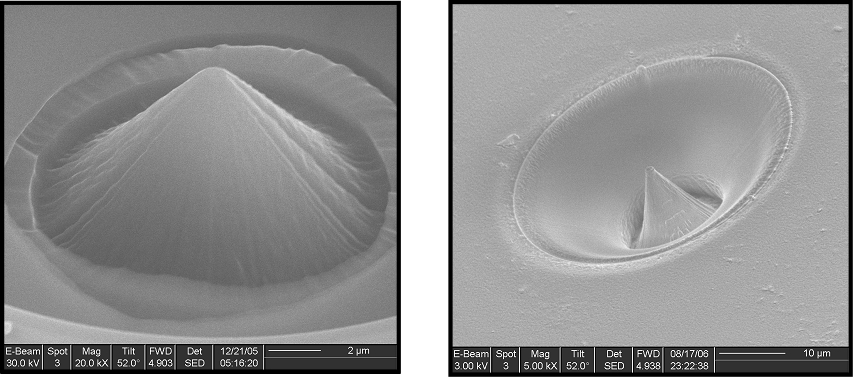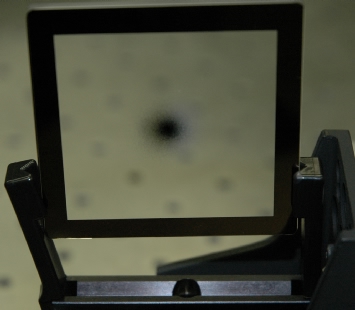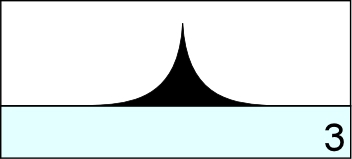|
MARCH 09, 2025
|
|
 |
 |
Development of Occulter Masks
Development of Soft-Edge OccultersSAO, Harvard University, and Lockheed-Martin Corp. (LMCO) are exploring new methods to manufacture soft-edge occulting masks. The Harvard investigation is described in the next paragraph. The LMCO efforts, described in the box below, studies manufacturing occulter masks utilizing lithographic methods. At Harvard, we are currently investigating two new methods of occulter fabrication utilizing a focussed ion beam (FIB) system: 1) milling molds into a substrate and filling the void with the absorbing material and 2) milling the desired mask shape out of a blob of absorbing material. Both methods have the advantage that many types of absorption profile can be manufactured and that the optical depth of the mask can be varied once suitable absorbers have been identified. First manufacturing test runs have shown, that the direct milling approach has advantages over the mold-milling approach, e.g. no planarization and transfer of the mask are required. Therefore, we are focusing on the direct-milling approach. The choice of absorber materials, for examples see box below, opens possibilities to manufacture masks from visible to infrared wavelength. Fabrication procedure for direct-milled, soft-edge Lyot stops.
FIB Direct-Milled Mask Test Results
Results of FIB manufacturing tests performed as part of undergraduate education. The SEM-pictures show examples of direct-milled absorber profiles milled into Si-substrates (left) and PMMA (right). Both pillars were manufactured using a FIB control script. The diameters of the bases of the pillars are about 10 mm and 14 mm, respectively. The right pillar shows inproved surface smoothness. Lockheed-Martin Approach
Lockheed Martin uses a halftoning technique to manufacture coronagraphic masks. The mask area is subdivided into pixel and a random number is assigned to each pixel. The desired amount of transmission within the pixel is then calculated according to the desired ideal function. Then, the result is compared to the random number. If the random number is larger, the pixel will be opaque and if smaller, it will be transparent. Finally, the pixel pattern is transfered onto a coated substrate lithografically. The figure to the left shows the design of such a pixel array displaying an entire mask and zoomed in portion showing individual opaque, square pixels. The picture to the right shows a mask manufactured for our testbed. The mask�s absorption profile is Gaussian.  |
||||||||||||||||||||
|
|||||


